I have long been an admirer of the artwork of the Pre-Raphaelite Brotherhood (PRB) though there is a little confusion out there as to who the Pre-Raphaelites were. Not about the founders, they are consistently listed as: William Holman Hunt, Dante Gabriel Rossetti, and John Everett Millais, but if you do a google image search for ‘Pre-Raphaelite artists’ you will get images from a big range of artists. Who was officially in and who might have just been influenced by their ideas? Before we answer that, let’s go over why/when the PRB started and who was involved.
Origins
The founders were inspired by early Italian painters predating Raphael. The frescoes at Camposanto at Pisa are a great example of the kind of art that inpsired their thinking. The frescos were largely damaged or destroyed during WWII, but have been restored as far as what is possible. They were also inspired by the Nazarenes, a German group of artists living in Rome who wanted to revive the great traditions of religious art.
They were also rebelling against the Royal Academy, believing that the Academy was full of trivial and vulgar subjects. They wanted to paint scenes that were of more importance. Millais said that the goal was to paint images that would turn “the minds of men to good reflections”, desiring to inspire and uplift the viewer. They also felt that the Academy, rather than teaching truthful representations, taught many tricks that lacked artistic integrity. Sir Joshua Reynolds was referred to as ‘Sir Sloshua’ due to what the PRB called ‘sloshy’ painting or quick and rapid painting that celebrated the brushwork over the representation of the subject.
At their founding meeting in 1848, several others were invited to join the brotherhood; James Collinson, a painter, William Michael Rossetti, a writer and critic, Frederic George Stephens, also a critic, and Thomas Woolner, a sculptor and poet. At this meeting William Rossetti recorded 4 stated goals of the PRB as follows:
- To have genuine ideas to express;
- To study nature attentively, so as to know how to express them;
- To sympathize with what is direct and serious and heartfelt in previous art, to the exclusion of what is conventional and self-parading and learned by rote;
- And most indispensable of all, to produce thoroughly good pictures and statues.
Much of what they believed can be traced to the ideas of John Ruskin, who wrote in Modern Painters that the artist should “go to nature in all singleness of heart” and “rejecting nothing, selecting nothing and scorning nothing; believing all things to be right and good, and rejoicing always in the truth.” They also rejected the drama of artists like Caravaggio and the use of chiaroscuro as being false. They felt that to capture truth, they needed to draw strictly upon nature and paint their landscapes outside entirely (rather than do a study and complete a larger finished piece back in the studio).
You can see this wrought out in the PRB landscapes where nature is painted in all it’s minute detail and with a high degree of fidelity. Just look at details from this landscape, Our English Coast, by Hunt. You will see the bright colors, crisp and detailed brushwork that is typical of PRB works.
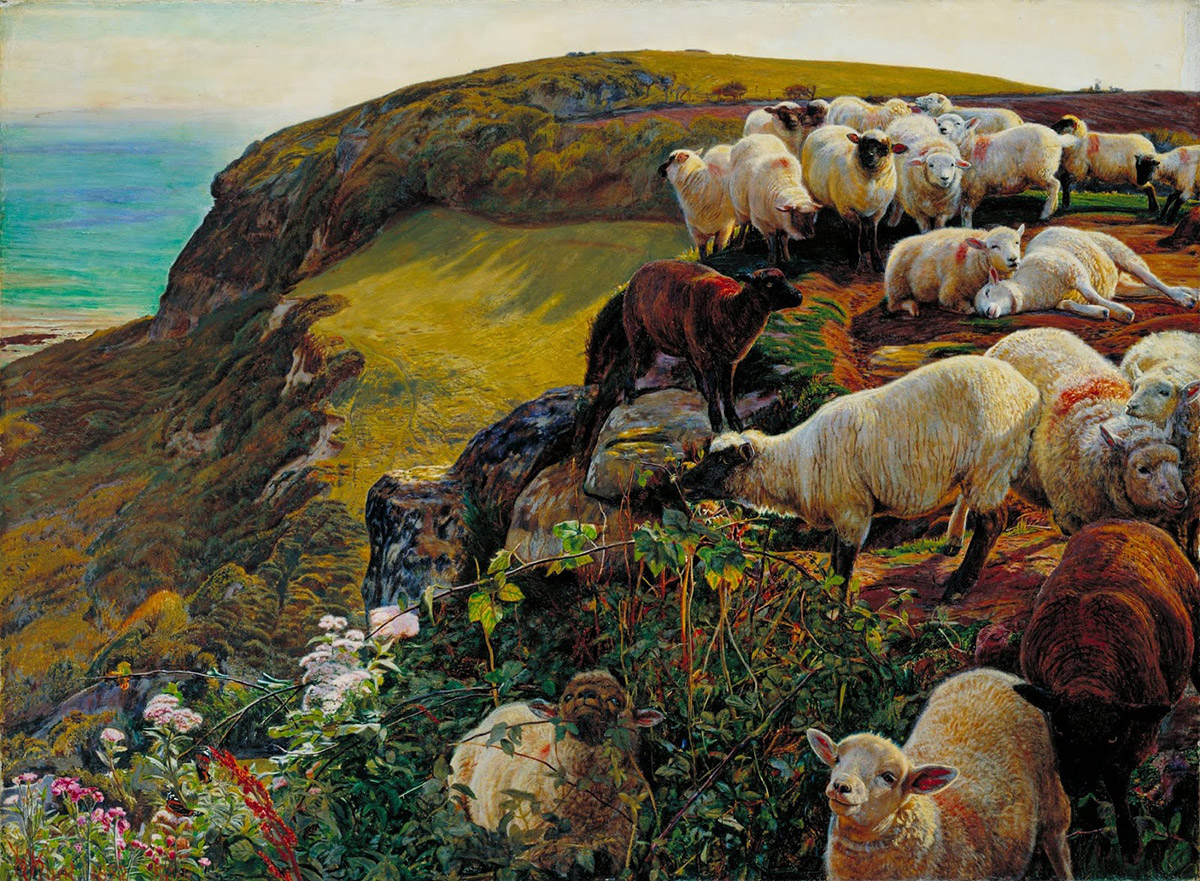 |
| Our English Coast by William Holman Hunt |
Their foundations were not really anything new, but the culmination of a tide of feelings in England towards the early style of Italian art and an adherence to nature.
Technique
The painting method of the PRB was to paint with pure colors over a brilliant white ground. They didn’t tone the canvas with a wash or imprimatura. Many of their paintings are still rather jewel like in person because of this approach. Compared to some of their contemporary paintings, it can be almost jarring. I had the chance to go see a victorian show in D.C. back in the mid nineties and came upon “The Scapegoat” painting by Hunt. It stood out in the room, with its fine detailing and bright colors. It is a strange painting, but I kept coming back to it for another look because of its intensity.
 |
| The Scapegoat – William Holman Hunt |
Timeframe and Demise
The official union of the PRB as rather short, starting in 1848 and ending in 1853. The first paintings appeared in 1849 where the mysterious ‘PRB’ initials first appeared. The group started out with some success. Millais’ painting, Isabella, received praise for his attempt to paint in the early Italian manner, but the odd perspective and the depiction of the man kicking Isabella’s dog was derided.
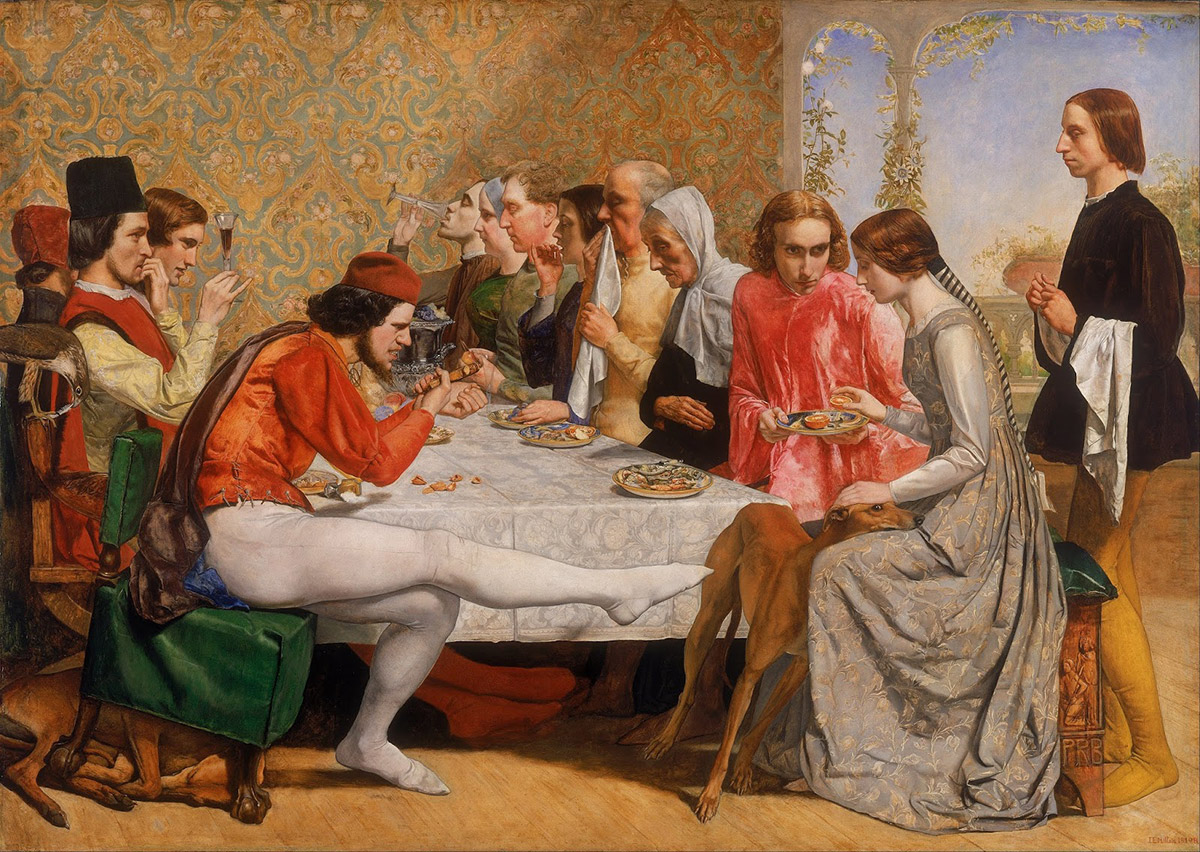 |
| The first publically exhibited PRB painting |
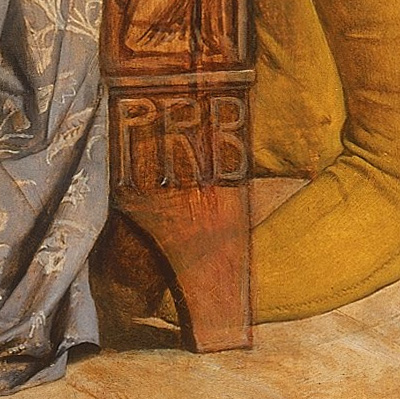 |
| The PRB initials carved into the bench |
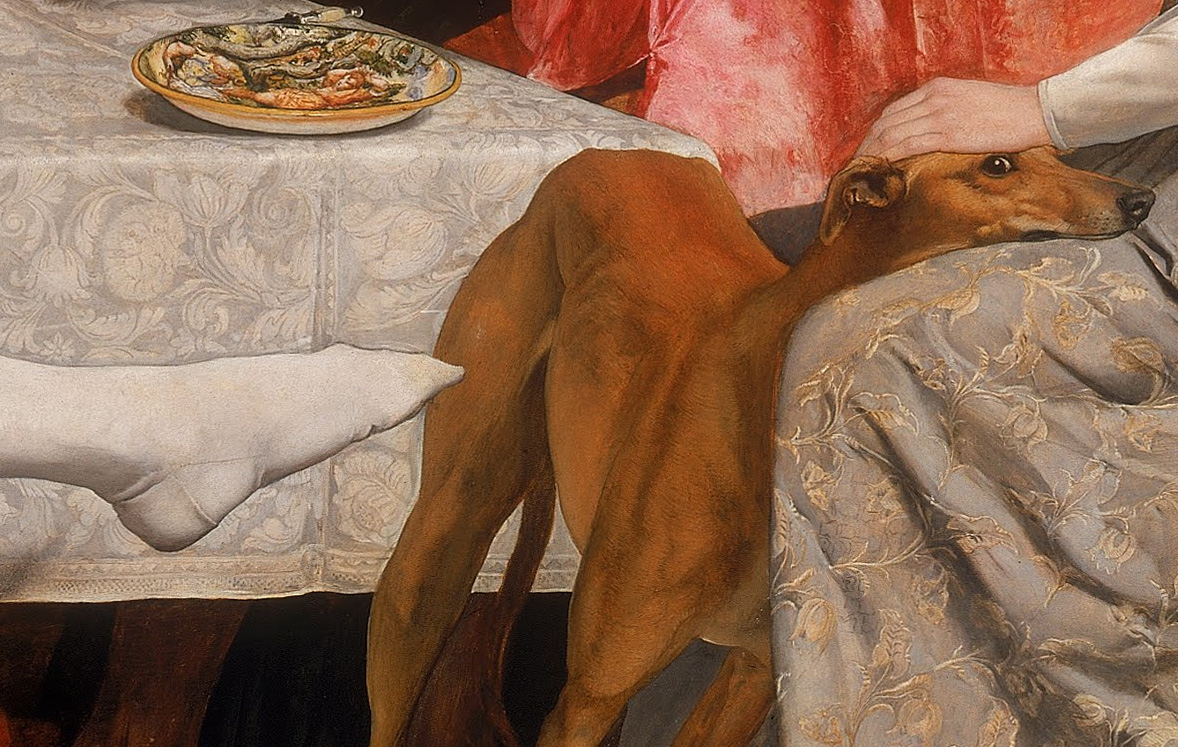 |
| Poor dog getting kicked |
All was not well though. The group as a whole received little sympathy the following year. Art reviews back then were brutal! One paper, describing Millais depiction of Mary in Christ in the House of His Parents, said she was a “woman so hideous in her ugliness that… she would stand out from the rest of the compant as a Monster, in the vilest cabaret in France, or the lowest gin shop in England.”
Remember, the PRB wanted to stay true to observation, so they painted with fidelity to their models. How would you like to read that review if you were the model for Millais’ Mary!?
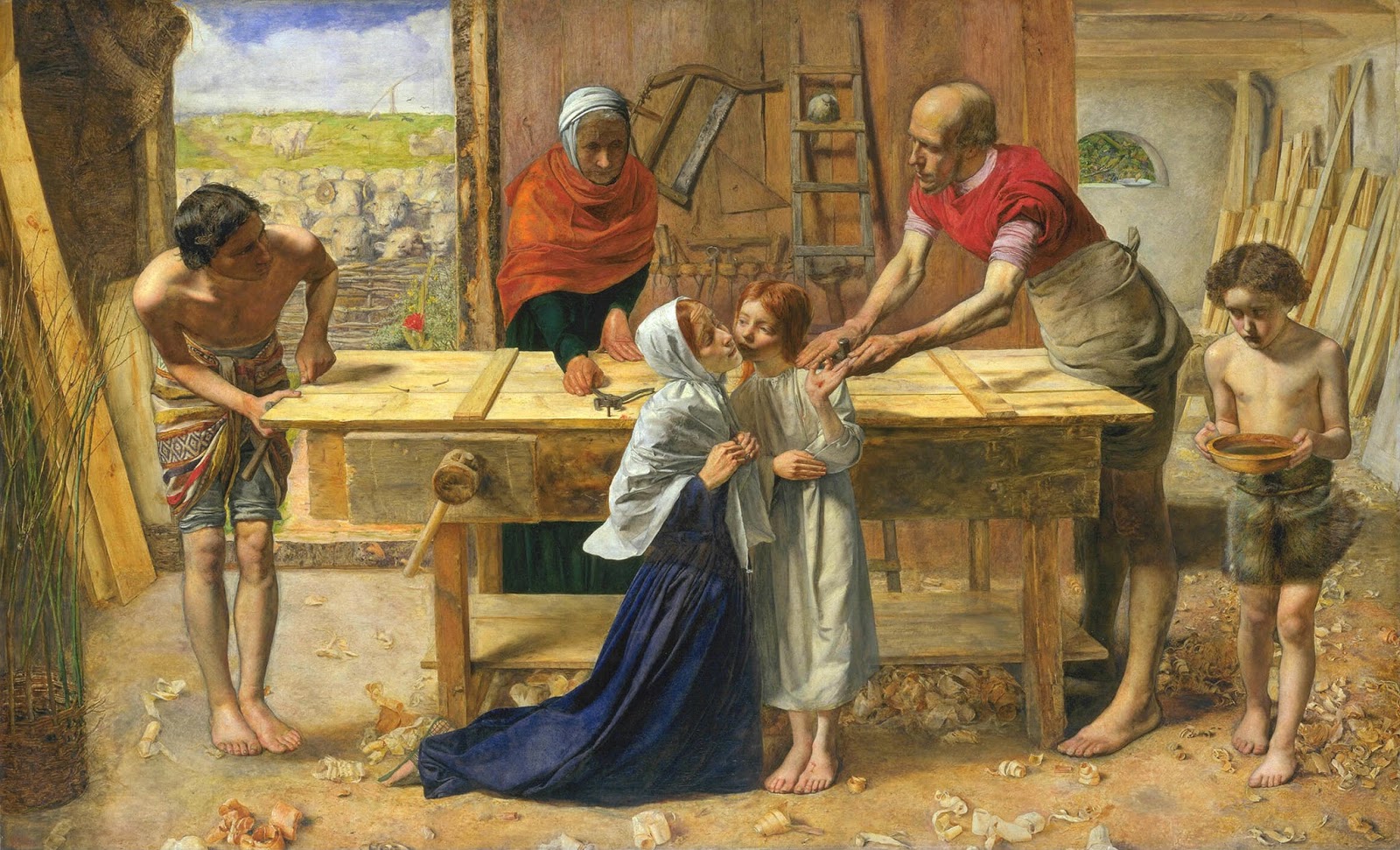 |
| Christ in the House of His Parents by Millais |
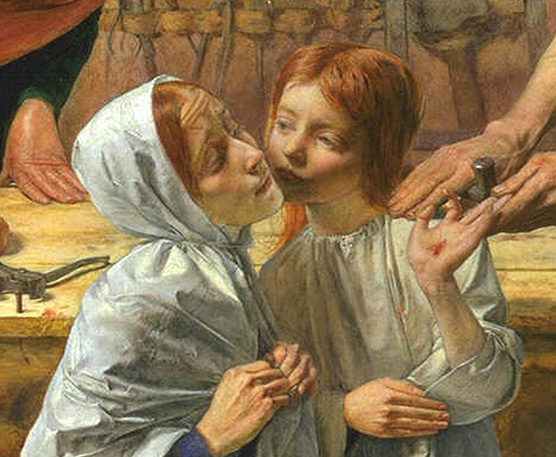 |
| Detail – I think the critique of Mary here was a little harsh! |
In 1853, Millais was elected as an associate to the Royal Academy, the institution that the PRB rebelled against initially. Hunt left for the Middle East the following year, effectively ending the Brotherhood. Of this, Rossetti, who was moving away from the Brotherhood already, wrote “so now the Round Table is dissolved”. Millais, my favorite of the PRB, would later abandon the it’s ideals and see the greatest success through his career.
My two favorite Pre-Raphaelite paintings are by Millais. Ophelia and The Blind Girl.
 |
| Ophelia by Millais |
The details and execution of this piece make this painting the masterpiece of the PRB.
Another hidden creature, the little red breasted robin on the left. Look at the remarkable renderings of all the twigs and leaves in this small detail from the painting.
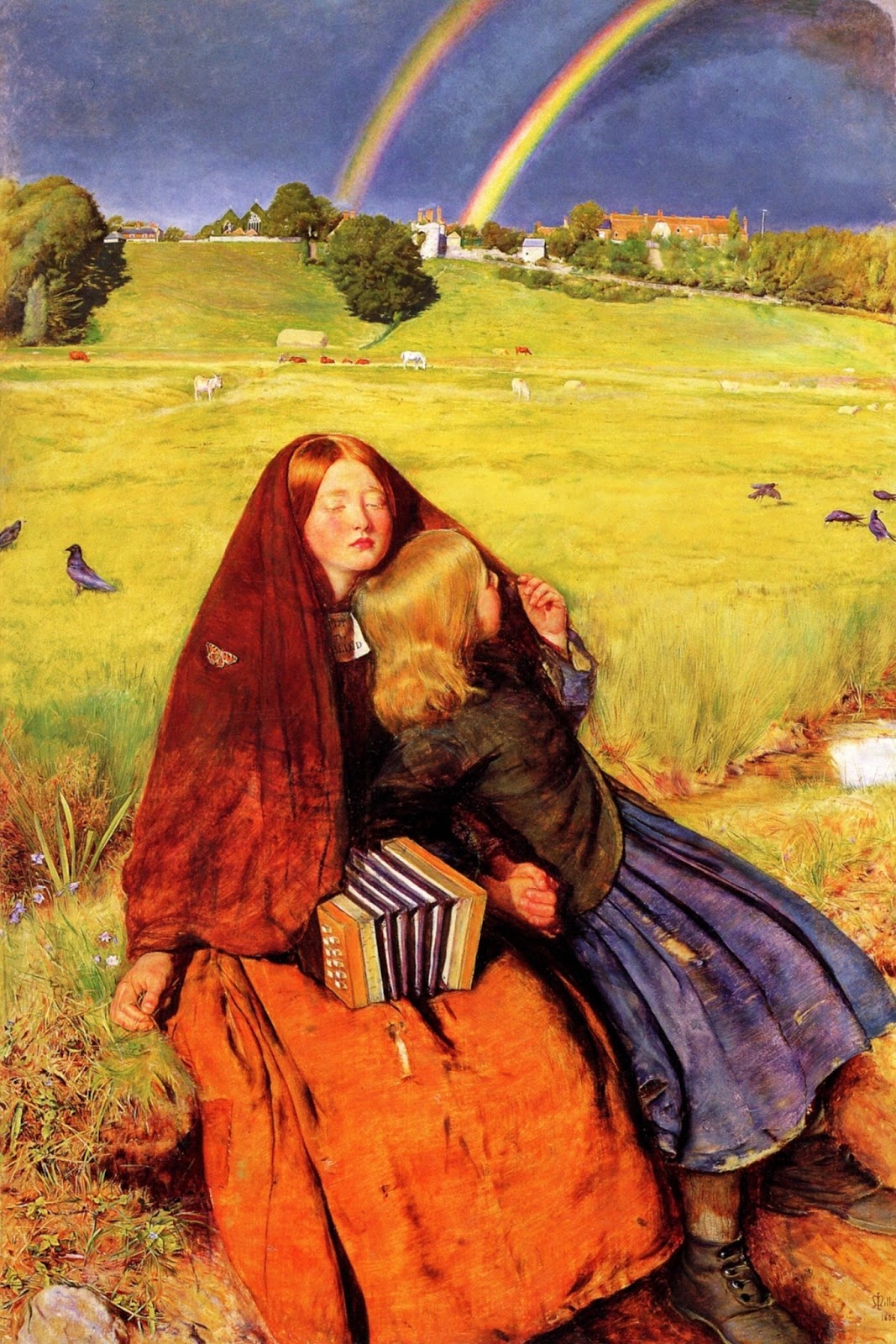 |
| The Blind Girl by Millais |
This painting, in all it’s beauty is also rather heartbreaking. We see the beautiful girl, eyes closed or closing, sitting on the side of the road with her sibling. The smaller girl looks over her sister’s shoulder seeing a beautiful rainbow crowning a beautiful landscape of green grass, rolling hills, a deep blue sky and animals at ease in their natural setting. She holds her sister’s hand and sits protectively under her shawl. I love the very real and touching way the younger sister feels the hem of the shawl, rubbing it between her fingers. This is something I have seen my own kids do with their blankets or their mother’s hair when they were a little younger.
Look how she feels the small blade of grass between her fingers. She is trying to take in her surroundings as well. The flowers, forget-me-nots, seem to be a message from the artist to not neglect or forget those that are in need, no doubt reflecting the feelings of the blind girl as well.
Impact and Legacy
Now we know who was a part of the Pre-Raphaelite Brotherhood. That means that many of the other artists that we often see listed among them, (Waterhouse, Leighton, Tadema, Hughes…) were not actual Pre-Raphaelites. If you did the search for “Pre-Raphaelite Artists” in Google Images though you saw that most of the first images to come up are all Waterhouse images.
I think it is much more accurate to put Waterhouse into the Romantic movement, though that doesn’t mean he wasn’t influenced. If you look at the Millais above and compare them to the Waterhouse below, you can see that both in execution and style, their work is very different. Waterhouse did not have the drive to faithfully render nature in all it’s detail. His work was more impressionistic. It even contained the “sloshy” suggestive brushwork the PRB railed against. His most famous painting, The Lady of Shallot, was more of a naturalist painting than anything the PRB would have done.
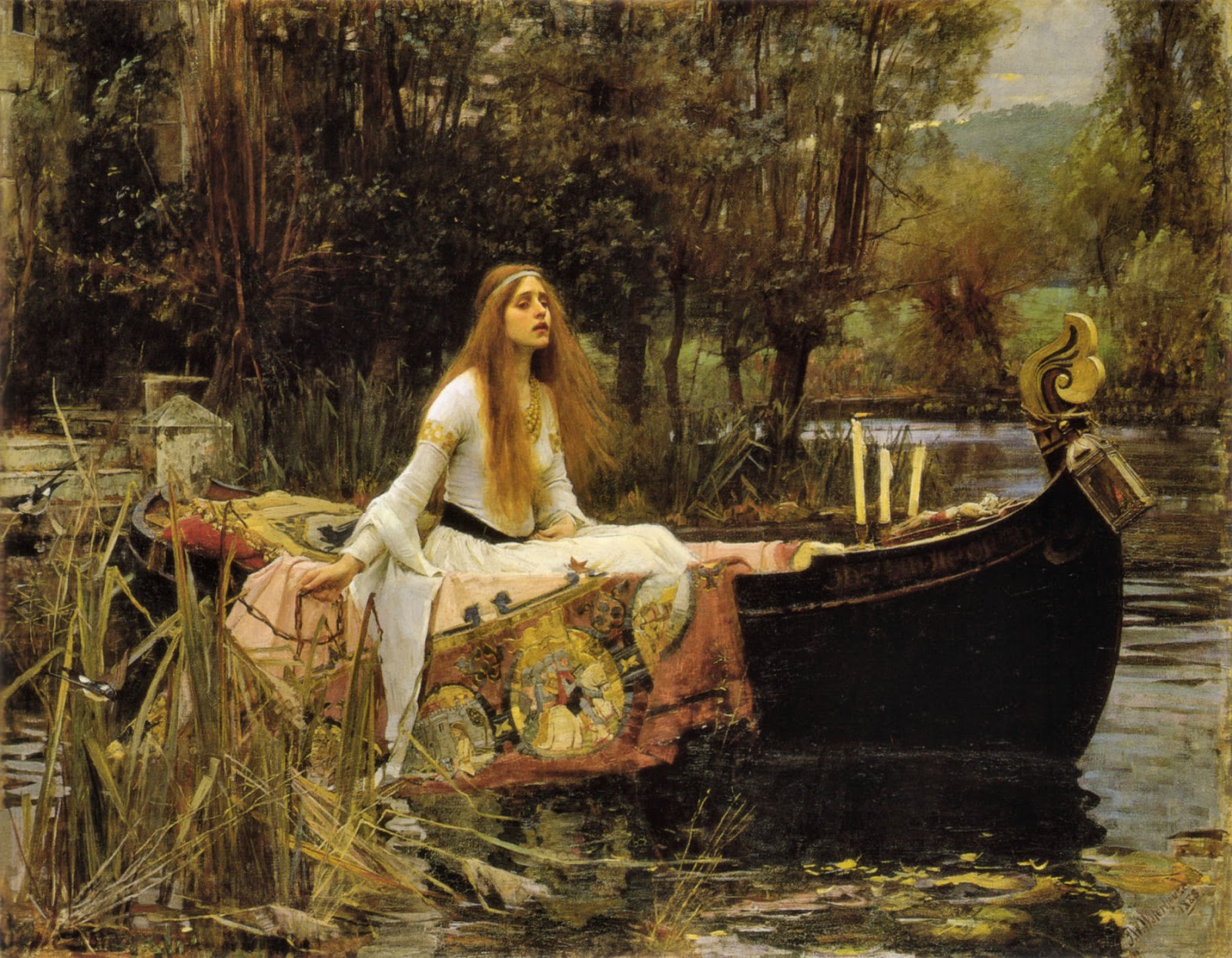 |
| The Lady of Shallot – Waterhouse |
Putting that aside though, the brief initial movement did influence many artists, spawning what is referred to as ‘Pre-Raphaelitism’ which occurred under the umbrella of the Aesthetic Movement that swept through England and Europe in the 1860’s. The attention to detail, historical accuracy, the goal of raising the artistic bar and having a social and moral voice were all ideals that the PRB gave fuel, and the influence extended beyond painting through the end of the 19th century.
Further Reading:
Metropolitan Museum of Art
Wikipedia entry on the PRB
Camposanto Frescoes
I also drew much information for this post from the book, The Pre-Raphaelites by Christopher Wood, which you can get in hardback for about $4 plus shipping at the time of this writing. It is a great book with some excellent reproductions and writing.
Thanks for giving this a read. I wrote this as an excuse to learn a little more about the Pre-Raphaelites and I did! I hope you found it useful as well.


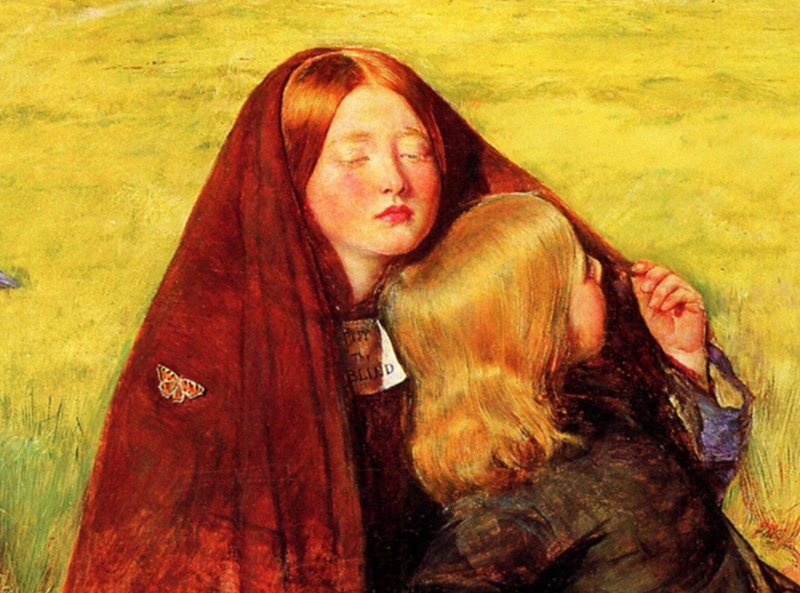
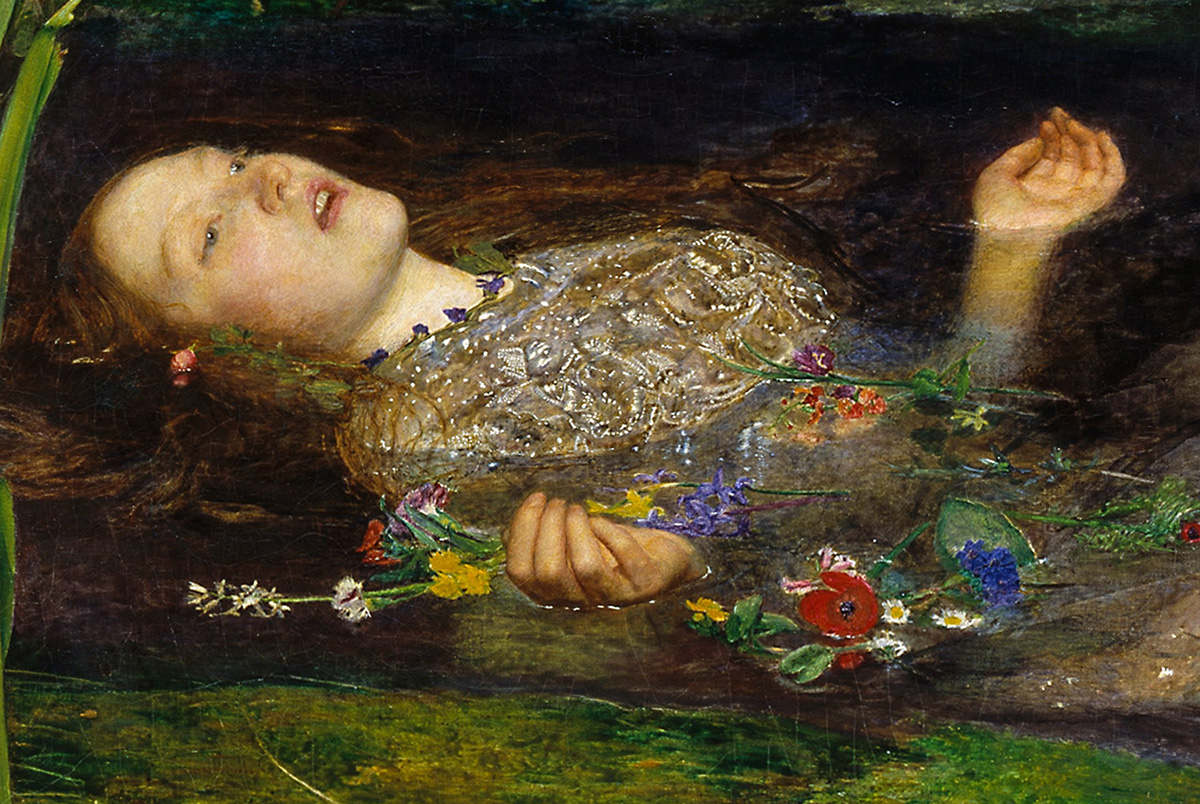
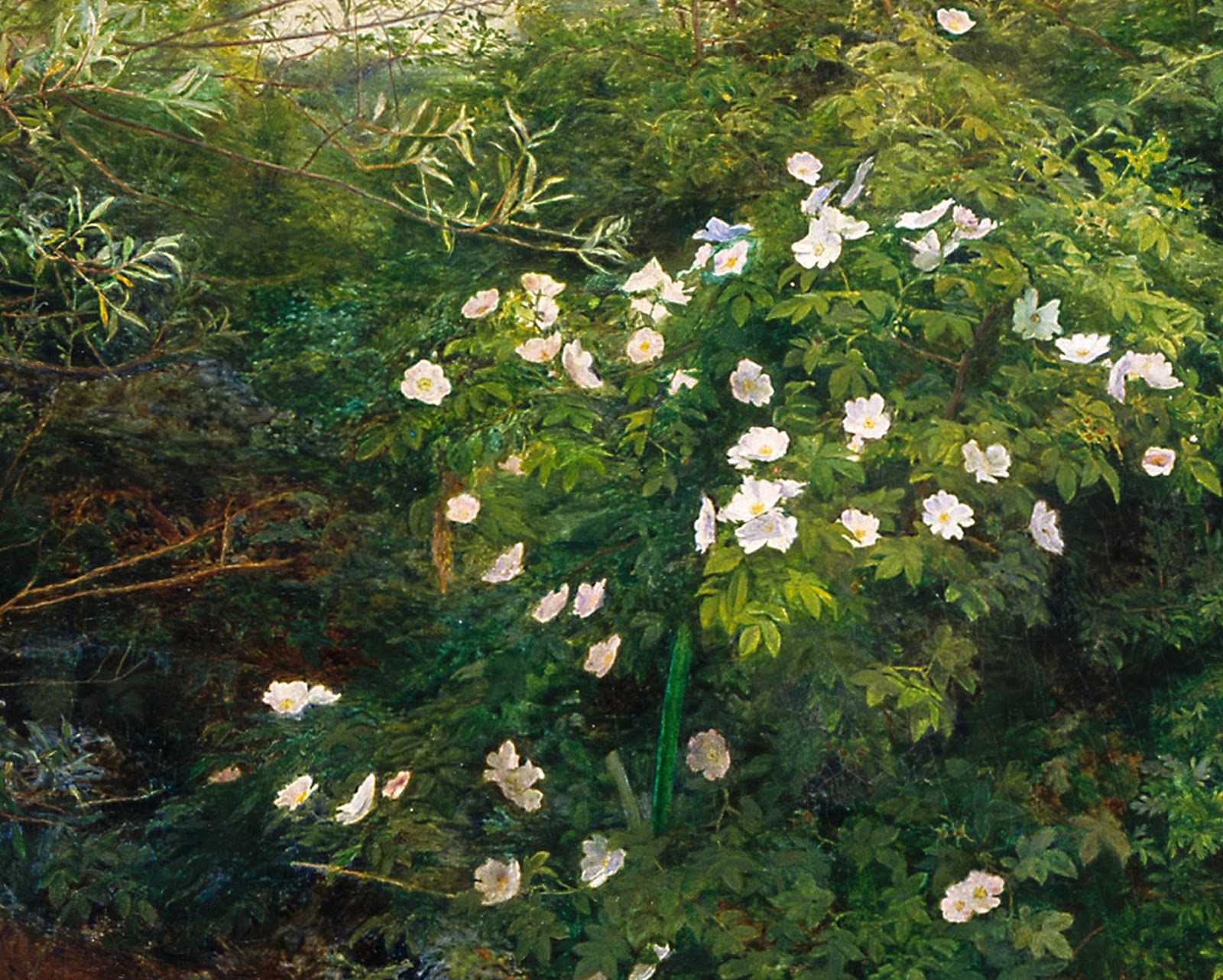
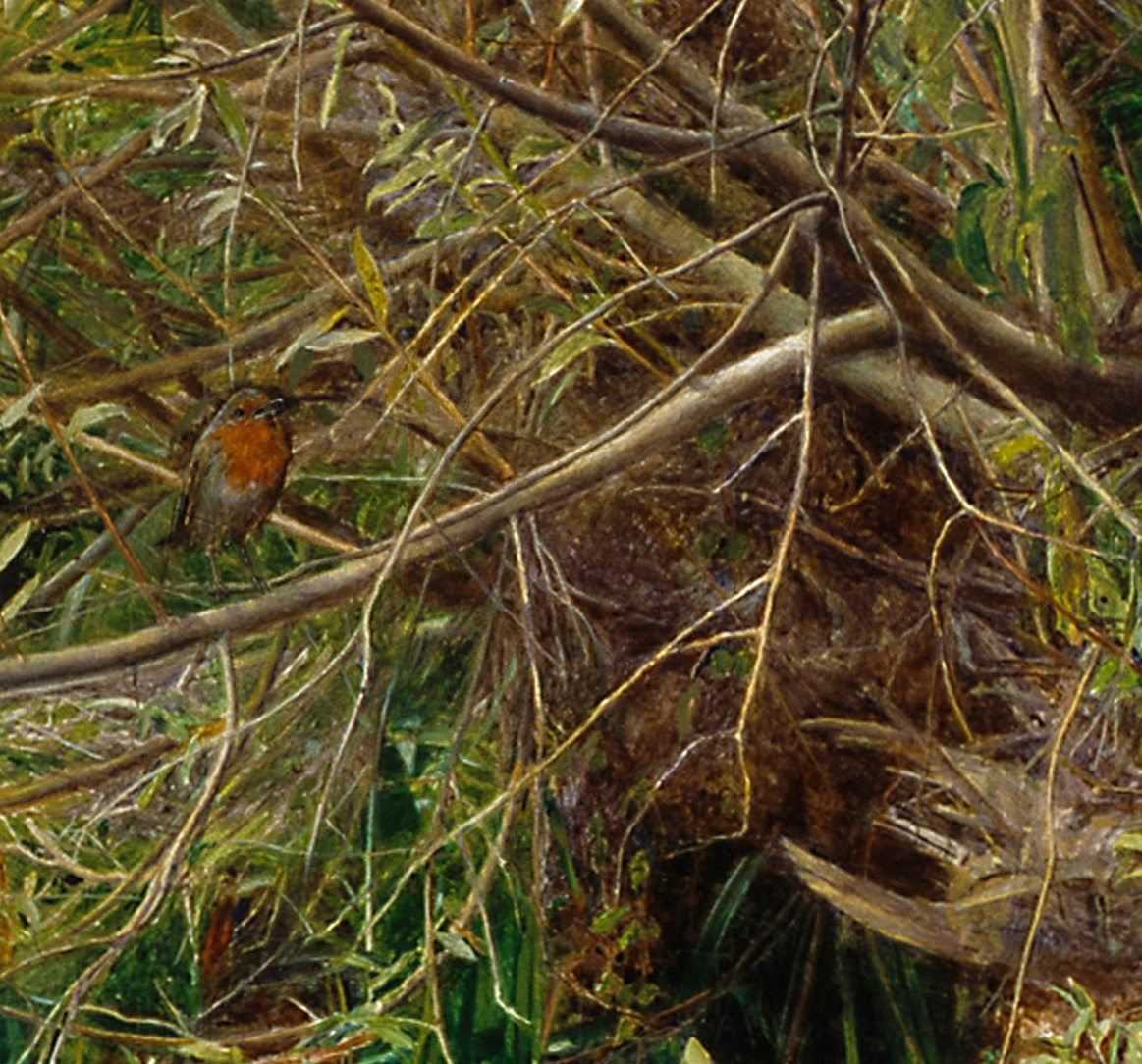

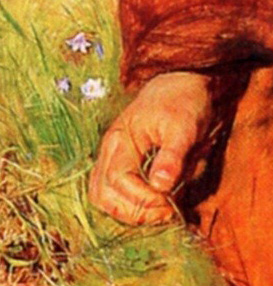
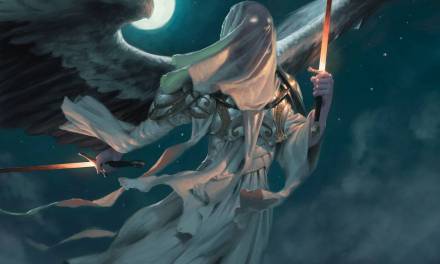
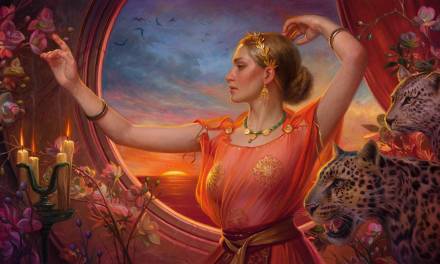
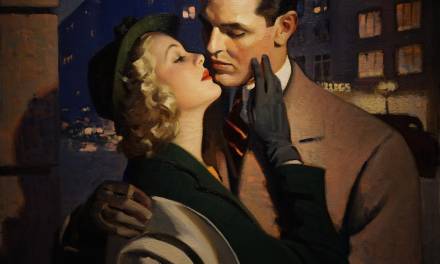
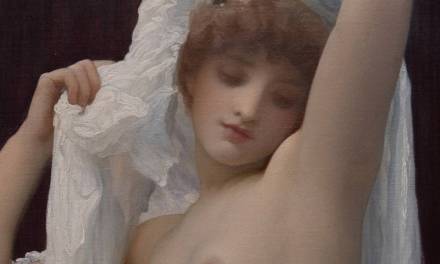
The Christopher Wood book is great – lot's of big colour plates and a great concise history. I think the Blind Girl is still in one of the Birmingham galleries a few towns over from me – keep meaning to go and see it – that and the bridesmaid, and ophelia of course, are real masterpieces.
I used to avoid pre raphaelite stuff as a student, I thought it was over polished and basically a lot of pitiful looking women running through the woods (I'm talking to you Waterhouse!), but now I've studied them a bit more thoroughly they're some of my favourite works, really impressionistic in painting style up close and great examples of mood and character in art
Great post 🙂
not the bridesmaid sorry, the bride… whatever, great painting!
http://reproarte.com/images/stories/virtuemart/product/millais_sir_john_everett/0133-0318_die_braut.jpg
Wonderful post! Thank you for doing this it is most enlightening. I had always been taught that Waterhouse, one of my favorite painters, was part of the PRB. Anyway, it's good to know some of the history of the PRB.
Thanks for giving the post a read Phil! The Bride painting is another great example! Thanks!
Thanks for the reply and for giving the post a read. I don't know why he gets included so often. I think maybe it is all the redheads he painted. 🙂 It is more strange to me that Leighton is included. He shared almost nothing in common with the PRB values, but I find him on some lists here and there too. Thanks again.
Thanks Howard- Love the PRB group. Here's another good volume that is well reproduced and very affordable:
http://www.amazon.com/Pre-raphaelites-K-E-Sullivan/dp/1841860956
Though I tend to paint more loosely these days, I continue to be inspired by the Pre Raphaelite's work. Good stuff.
Great post!
I'd like to add to the part about the PRB technique if I may. In Harold Speed's excellent 1924 book “The Science and Practice of Oil Painting” (Reprinted in a Dover edition as “Oil Painting Techniques and Materials”) he describes a technique peculiar to the Pre-Raphealites wherein they started painting on to the bright white ground BEFORE it fully dried, while it was tacky. Apparently this added to their translucent glow.
Wow! One penny plus shipping for the hardback. Thanks for sharing Greg!
Patrick, thanks for sharing that. I had heard that at one point. I am curious how they worked that. Especially on paintings like Ophelia, where the piece took 4 months just to paint the figure. I wonder if it was approached like fresco, where only the part that was going to be painted that day was laid down. It seems like it would be challenging to have an even ground. I'd love to read more about it!
No problem, Howard! Unfortunately that tantalizing bit is all that's in the book. A fresco-like approach does seem possible. At any rate, fascinating stuff. I got to see a lot of examples first-hand at a show in S.F. a couple of years back, and it's spectacular in person.
Wow. The depth of meaning in The Blind Girl if you look close enough…that's something. Thanks a lot for this post.
Thanks for the great posts and good images. However, the flowers in The Blind Girl are not forget-me-nots but bellflowers (campanula). I thought I might say it, because the painter chose this particular flower instead of painting any random purplish blob.
Zeitwolf – Thank you for replying and the comment about the flowers. I think you are right! The topmost blossom in the detail of her hand does look like a bellflower. I have a book on victorian symbolism in flowers. At that period, people would press flowers and send them to convey meaning that they didn't want to right. The bellflower symbolized “disappointment or loss.” That doesn't mean that is what Millais intended, but it is interesting! Thanks again for commenting.
*didn't want to write.
One penny is definitely worth it!
Great breakdown! thank you!
Thanks so much for this article! I think the PreRaphaelites are under-appreciated, and under-represented. I enjoyed this immensely!
While his influence on the techniques employed by the PRB and their attitudes toward the copying of nature with absolute fidelity is only occasionally mentioned in discussions of the PRB, the very popular work of the watercolor artist, William Henry Hunt (1790-1864), clearly played an important role. This other William Hunt, who is so often confused with William Holman Hunt, even by museum cataloguers today, was a great favorite of John Ruskin even before the critic began to champion the PRB. Ruskin held William Henry Hunt out as a model to be followed by those seeking to improve their own art, going so far as to claim that the only perfect artist among the English in the use of color was the humble watercolor artist. Hunt was also Ruskin's model artist when it came to the critic's strong statements regarding the complete imitation of nature without any resort to an artist's imagination to alter what was actually seen in the real world.
By the 1830s, Hunt was already exhibiting, at the annual shows of the Society of Painters in Water-colours, highly detailed, naturalistic watercolors with fruit, flowers, and bird's nests as subjects. By the 1840s, he had perfected a technique he had earlier innovated, whereby Chinese white, an opaque, water-based pigment, was mixed with gum arabic to form an enamel like ground onto which he stippled in small strokes pure watercolor. To a small degree, Hunt actually built up areas of this white underpainting to conform to the contours of the object he wished to depict. The result of the use of these techniques is remarkably similar as that which was seen in Pre-Raphaelite paintings, highly detailed images in glowing, bright colors. Watercolors by earlier artists look dull and flat in comparison, while the work of the large number of later, Victorian watercolor artists who followed Hunt's lead were detailed, bright, colorful, often to a degree that they could be mistaken for oil paintings.
It can be argued that Hunt, more than any other 19th century artist, was the founder of Victorian art. It is also very possible, although difficult to prove, that Hunt's technique of using fine stippling, influenced the Impressionists, since Ruskin described Hunt's method in his The Elements of Drawing (1857), which was translated into French. Hunt's watercolors had also been very successful when shown at the 1855 Paris Exposition Universelle, astonishing French critics, who were also a bit dismayed that such small works in watercolor sold for more than the paintings by their own, much-admired Delacroix.
By the time Hunt died in 1864, leaving an estate worth around £20,000 (about $4,000,000 in today's dollars), his work was highly admired and collected. Even as the 20th century began, in large part due to Ruskin's praise, watercolors by Hunt were still seen as models for the depiction of unadorned nature. Hunt's fame extended across the Atlantic, where the Harvard art professor, Charles Eliot Norton, had all of his classes copy a Hunt watercolor of a bird's nest from his own collection and where another bird's nest by Hunt was one of the earliest paintings collected by Henry Clay Frick. But, as Victorian art, including the work of the PRB, began to fall from favor, William Henry Hunt and his work were largely forgotten — so much so that by the 1920s his work was often listed in art sale indexes under the names of Walter Hunt, an oil painter of barn yard animals, and, of course, William Holman Hunt, who hadn't been quit so forgotten. But museums have begun to buy examples of his work, with the National Gallery Washington, Met, Chicago Art Institute, and a few university galleries acquiring one of more of his watercolors over the past 20 years.
Craig Englund